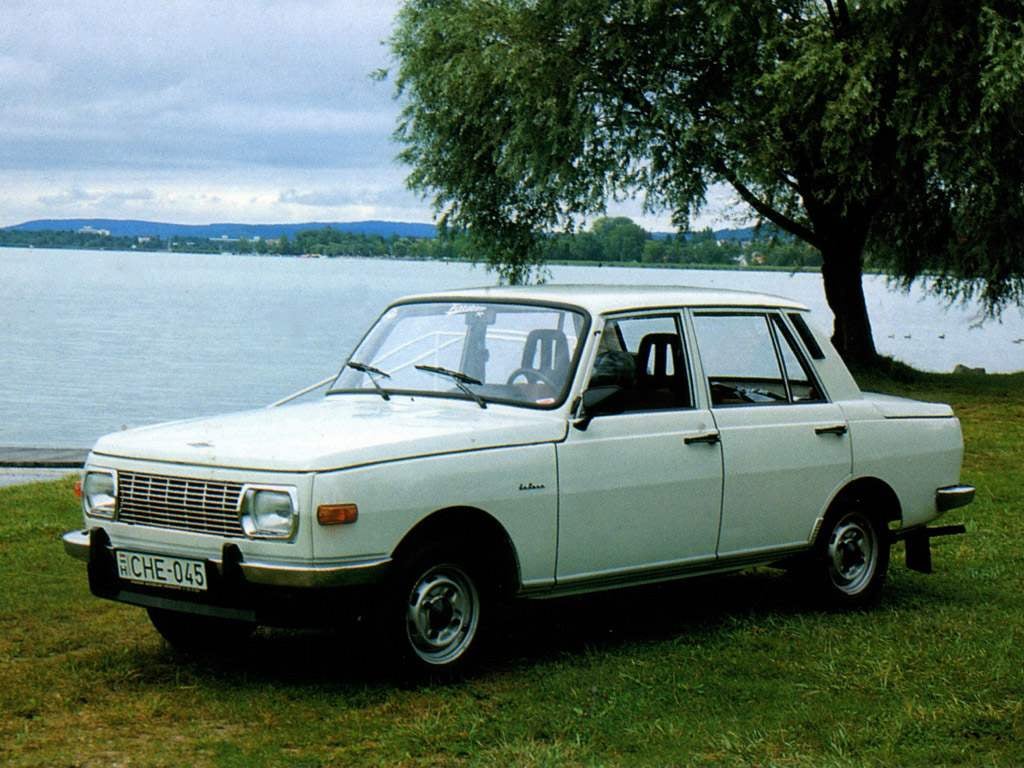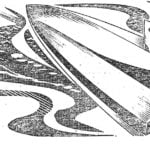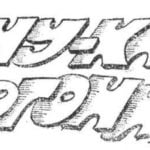 BMW Wartburg (GDR). The world is constantly changing—some States are split into several, while others prefer to merge into one. The latter include the FRG and GDR merged at the end of last century, unified Germany. The process of reunification of these States was not easy—the level of industrial potential of the Eastern part of the new country were significantly lower compared to the West, and the process of modernization of production demanded huge financial investments. Of course, a radical update is needed and the automotive industry, since the East German factories were producing at that time only not the most modern cars — mainly small car Trabant and Wartburg.
BMW Wartburg (GDR). The world is constantly changing—some States are split into several, while others prefer to merge into one. The latter include the FRG and GDR merged at the end of last century, unified Germany. The process of reunification of these States was not easy—the level of industrial potential of the Eastern part of the new country were significantly lower compared to the West, and the process of modernization of production demanded huge financial investments. Of course, a radical update is needed and the automotive industry, since the East German factories were producing at that time only not the most modern cars — mainly small car Trabant and Wartburg.
The first car called Wartburg appeared on the automotive market in 1898—they were released by a small German company Fahrzeugfabrik Eisenach AG, and the name “Wartburg” has long belonged to the local mountain and the ancient castle. However, we are interested in the later period of the existence of cars with the same name, which began after the Second world war, when Germany was divided into two States. In October 1945 the Soviet military administration, headed by Marshal Zhukov issued order No. 93 of 13.10.1945 “On organization of production of cars and motorcycles at the former BMW plant in Eisenach”. It was meant the manufacture of motorcycles BMW R-35 BMW 321. Later, on the basis of automobile factory in Eisenach was created by a joint Soviet-German enterprise Sowjetische AG Maschinenbau Autowelo Werk BMW Eisenach, which specialized in the production of prewar models of the firm BMW.
Among them was popular in the late 1930-ies BMW index 321, 326 and 327, and these machines came out of the factory in Eisenach with the acronym BMW blue and white emblem, causing legitimate resentment from BMW to restoring manufacturing in the Western sector of the country.
In 1949 the designers of the automobile prepared for serial production of the new model of the BMW 340, resembles a pre-war BMW 326. At the same time was organized the release of the car-cabriolet BMW 327/2.

The car EMW 340

Wartburg 1.3 — the car was produced from 1988 to 1991
Litigation with the firm of Bayerische Motorenwerke (BMW) ended only in 1952, the company Autovelo had to give the owner of a well known brand in the name of the plant and Marche produced cars instead of BMW appeared the abbreviation EMW (Eisenacher Motorenwerk), and the emblem of the machinery of this plant is red-white circle, almost the same (except color) as the BMW.
In 1953, the party and government leadership of the GDR is disposed to convert the plant in Eisenach for the production of cheaper small car IFA F9 (pre-war DKW F9 model) with a 3-cylinder 900-CC engine with a power of 37 HP
The automakers from Eisenach during the existence of the plant was able to create many car prototype, which, unfortunately, for a number of reasons — both economic and political, was not destined for production.
The production model of the Wartburg 353, which survived almost until the end of the last century, began in 1966. There were two versions of this car—four-door sedan and five-door wagon model Tourist. Front-wheel drive car, something similar to both “Moskvich-2140” and 966 ‘Zaporozhets” had spring suspension with telescopic shock absorbers, new steering, 13-inch wheels. The car is almost completely gone grease fitting to allow service suspension only every 50 thousand miles. brakes were single circuit with valve regulator pressure to the rear drum brakes.
For its time, the car was quite modern—its maximum speed was 120 km/h and 80 km/h it is dispersed for 15 seconds. The machine is well kept the road through the front wheel drive and shifted somewhat forward centre of gravity. However, the rack management did not provide accurate back-reaction of the steering wheel during the passage of the slippery turns and on the dirt road the steering wheel just tracked all the irregularities of the roadway.
In 1985, the factory in Eisenach produced 1 million cars Wartbug 353.
The model was produced virtually unchanged until the modernization of 1985. In the process of restyling was newly decorated front part Wartfcurg 353 — there are new headlights and grille, different bumpers and flanging of wheel arches. The car is equipped with a new reliable diaphragm clutch, aluminum radiator with electric cooling fan motor. The Wartburg 353 engine boosted to 50 HP, which increased maximum speed to 130 km/h.
Attempt serious updates to the model were made only in 1988, after the cold war. Thanks to the cooperation with the company Volkswagen, the car has received is a 3 cylinder 990-CC two-stroke engine of 50 HP is quite a modern 4-cylinder four-stroke engine working volume of 1,3 l — with it the car, the designation Wartburg 1.3, began to accelerate to the speed of 140 km/h, average fuel consumption was 6.5 l/100 km. the car was slightly modified exterior—large rear lights, installed new lights and grille, and the front seats came a hard plastic head restraints.

Geometric diagram of the Wartburg 353

The frame of the Wartburg 1.3, he had “inherited” from pre-war cars

Drive shaft with dual u-joint (modern cars have the function performs the CV joint)
Wartburg 1.3 was produced at the VEB Automobilwerk (became known as a former EMW) in Eisenach from October 1988 until April 1991. The vehicle was a front-wheel five-seat car frame design, equipped with 4-cylinder four-stroke liquid-cooled engine working volume of 1,272 l, developed specifically for this car by Volkswagen. The engine was located transversely in front.
The camshaft was in the cylinder head, the rotation of the he quoted the timing belt. The pushers had a hydraulic mechanism to adjust the valve clearance.
Head motor unit from aluminum alloy. The bottom of each piston, are manufactured under license of Mahle, had a combustion chamber with cross-flow of the working mixture.
The crankshaft rotates in five bearings.
Preparation of the combustible mixture is carried out, single-chamber carburetor Weber semi-automatic trigger mechanism—instead of pulling the usual buttons of “leak” before the starter is on the driver it was enough to just slowly press and release the gas pedal. In addition, the carburetor was equipped with a system otkluchitsa the flow of the combustible mixture during engine braking.
Ignition system — electronic, non-contact, centrifugal and vacuum regulators.
Clutch single dry plate with asbestos pads and the Central retaining clip. Drive clutch mechanical, cable.
Transmission four-speed, synchronized (except reverse gear), with helical gears. The checkpoint was located in a crankcase with the main gear. The gear lever was located on the floor. The drive to the drive wheels is carried out by means of hinges and axles.
The front wheels had independent suspension consisting of double wishbone levers attached to the frame with rubber joints, and steering knuckles — through maintenance-free ball joints. Shock absorbers telescopic, double-acting, spring suspension screw. Steering—rack and pinion.
Rear suspension—independent, with coil springs and telescopic shock absorbers. The wheels are mounted on separate levers and equipped with stabilizer twisting.

The front suspension of the car Wartburg 1.3

Geometric diagram of the Wartburg 1.3

The rear suspension of the car Wartburg 1.3
Brake system—dual circuit, driven rear drum brakes (because of their inhibition is regulated depending on the load of the machine), as well as front disc brakes with fixed calipers with four cylinders, and each circuit was served by a separate pair of cylinders.
Interestingly, Wartburg during the existence of the GDR could be bought for 16 950 East German marks—that was about 20 average monthly salaries. Nevertheless, the line to buy this car sometimes lasted for years — however, about the same as in almost all the countries of the socialist camp. However, there was no choice. Less wealthy stood in line for the “Trabant” with a plastic body. Those who were richer — preferred “Wartburg”over the last ten years of the existence of the GDR, about 1.2 million of its inhabitants became owners of the desired car.
In 1991, after the unification of the FRG and the GDR, issue of the Wartburg was discontinued, and the factory in Eisenach declared bankrupt and bought by firm Opel, which completely transformed the company, under the production of own machines.
Every year on the roads of Eastern Europe—the Czech Republic, Slovakia”, Bulgaria, Poland—is becoming less and less of these once very common there, car Wartburg.
Few owners of these cars now merged into fan-clubs to retain a subcompact, the oldest of which was released over four decades ago.
In 2005, the German enthusiasts of automotive vehicles collected and transferred to the Museum of German history, the Wartburg 353 sample 1980-ies, assembled on the initiative of the newspaper “Thüringer Allgemeine” of the original parts that are the former owners of these machines “just in case” kept in the garage since the time of General scarcity.
Technical characteristics of the car Wartburg 1.3
Length, mm……………………………..4216
Width, mm…………………………..1640
Height, mm………………………1412/1495
Track, mm……………………….1380/1360
Base, mm……………………………….2450
Curb weight, kg…………………900
Full weight, kg……………………..1320
Engine type ………….four-stroke, gasoline
Number of cylinders…………..four in a row
Working volume, cm3………………….1272
Engine power, HP………………58
Drive……………….front-wheel
Body…………………..frame, steel
Maximum speed, km/h………..135
The acceleration from 0 to 100 km/h, ………………20
Average fuel consumption, l/100 km….6,45
I. EVSTRATOV



